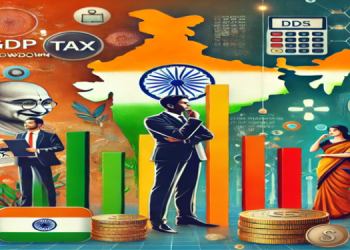MUMBAI: The last discounts after Black Friday and Cyber Monday are coming to an end and businesses are taking stock. According to data from affiliate network Admitad, Indians spent 21% more during the sale week this year compared to 2023, but just 7% more compared to the ordinary period this year. While ecommerce is booming in the country – its symbol, Black Friday, is rapidly losing its hold on the minds of shoppers.
Admitad studied over 10 million orders placed during sale weeks and the regular periods without special discounts, including over 600,000 orders in India. The top 5 cities in terms of orders this year were Delhi, New Delhi, Bengaluru, Mumbai and Hyderabad.
Why is Black Friday going by the wayside?
Although the sale week showed an increase in the number of sales compared to last year – its effect dissolved among other important events, such as the festival period. Nowadays, almost every brand has switched to an aggressive discounting policy. Stores and marketplaces often have internal sales, on top of layering discounts for holidays and events, and customers regularly receive coupons and promo codes with special offers.
Discount fatigue is increasingly affecting customer behaviour – they prefer to save items to favourites and wish lists to wait for the best price on specific items. Sale periods no longer generate the same excitement. Especially against the backdrop of growing distrust of discounts themselves. Many marketplace sellers and individual stores are constantly artificially inflating prices in order to get into the biggest discount picks. These unscrupulous practices have undermined shoppers’ faith in the benefits of Black Friday deals.
The impact of the global recession and inflation is also taking its toll – shoppers are less likely to make impulse purchases and more likely to form a basket in advance. The average check in India during Black Friday week this year rose more than 15% – to $31.
According to Neha Kulwal, MD Mitgo, India and APAC, “The increasing flow of influencer sales during Black Friday and Cyber Monday is a testament to the growing impact of influencer marketing in the e-commerce landscape. At Mitgo, we are committed to supporting this channel by actively developing innovative affiliate solutions designed specifically for influencers. For instance, we recently launched a social shopping platform, Trendweave, that allows users to browse and purchase products curated by influencers. Such projects will not only enhance influencers’ ability to drive sales but also significantly boost their revenue potential. By empowering influencers with advanced resources, we aim to create a more dynamic and effective sales ecosystem.”
What products were Indian shoppers buying up?
The impact of marketplaces during Black Friday 2024 was even greater. Even though they accounted for about 53% of purchases on average this year – their share jumped to 60% during the sale. This result was also influenced by technical innovations, such as the use of chatbots and AI-assistants to create customized product selections. Large platforms are the first to implement such methods, which gives them an advantage during periods of high demand.
Top product categories by share of total sales in India during Black Week:
Electronics – 25.4%
Fashion – 20.1%
Home & Garden – 17%
Beauty & Health – 9%
Toys & Hobbies – 8%
Car Products – 6%
Sport Products – 5%
Tools – 3%
Other – 6.5%
Compared to last year’s sale, demand for electronics, beauty and home goods increased.
In the online services segment, sales of online educational courses jumped by more than 50% and orders in the eHealth category increased by 30% compared to the normal period this year.
Which customer engagement channels are the most effective
Indian shoppers are increasingly savvy about the intricacies of online shopping and are more active in using tools to get the best price. As predicted, the availability of cashback played a big role for shoppers – over 25% of Black Week purchases were made using it. 18% of purchases were made using coupons and promo codes.
According to Admitad’s calculations, record sales this year came through mobile applications – they accounted for up to 15% of all online orders. Overall, the share of purchases from mobile devices continues to grow steadily in India and exceeded 50% during the sale.
Businesses attracted up to 15% of all orders through contextual advertising. More than 13% of sales came from targeted social media advertising and Influencers. Another 13% of clients were attracted by reviews in online media and articles on content platforms.
The hot period also had a positive impact on the revenues of affiliate publishers, who actively attracted orders for remunerations. Their profits jumped by 20% during the sale week.

















